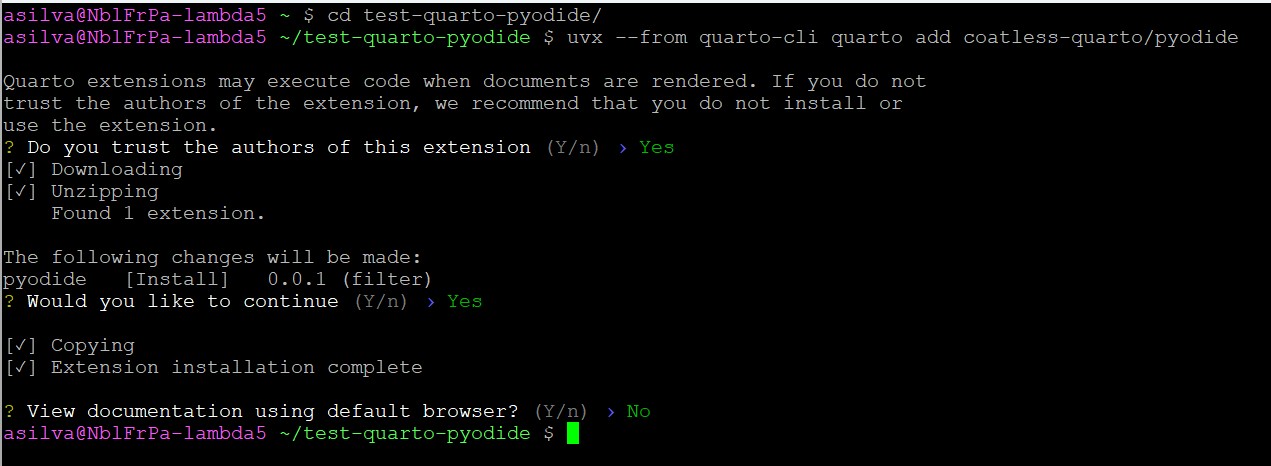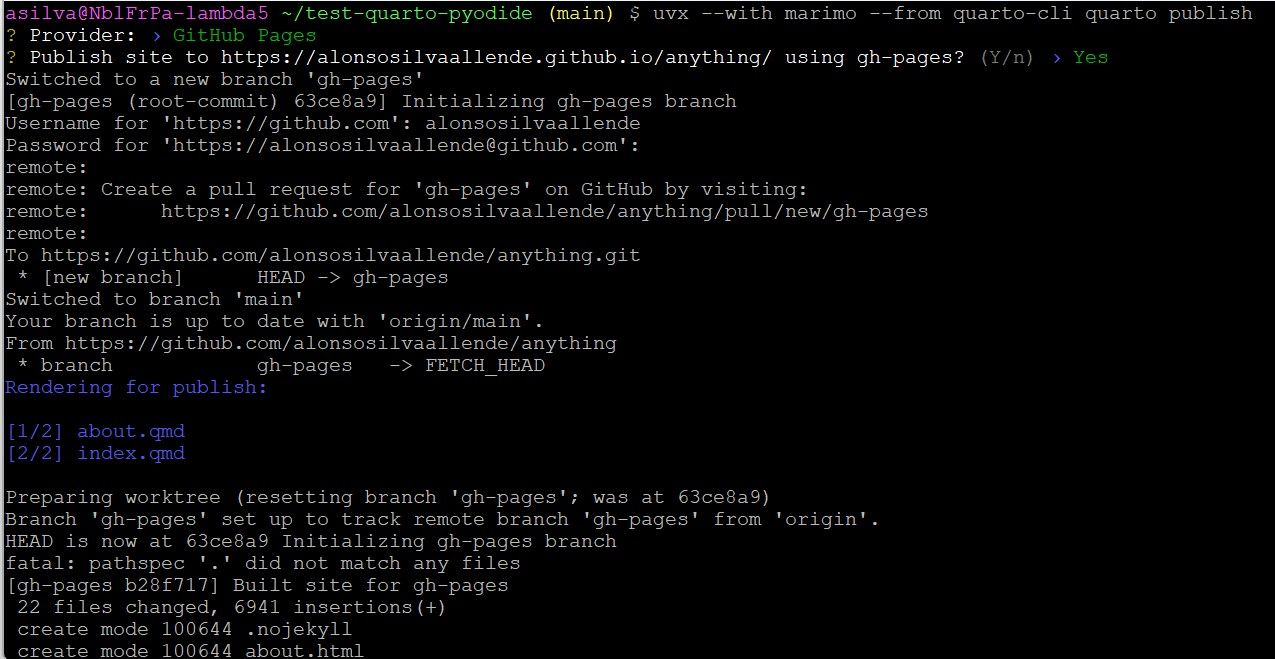TIL how to add notebook cells to Quarto projects such as the following two dependent cells:
- In the first notebook cell, we import the required packages and define \(x\) and \(y\):
- In the second notebook cell, we plot \(y\) vs \(x\) (and add a zoom to the beginning of the plot):
Notice that you can change the code inside the cells and run them again! Try it!
Instructions
- Install uv (if you haven’t yet):
Terminal
curl -LsSf https://astral.sh/uv/install.sh | sh- Create a Quarto project (if you haven’t yet):
Terminal
uvx --from quarto-cli quarto create projectHere are some example configuration options:

- Enter into the project folder and add the {quarto-pyodide} extension:
Terminal
uvx --from quarto-cli quarto add coatless-quarto/pyodide
- Edit the
index.qmdfile (this is an example):
index.qmd
---
title: "test-quarto-pyodide"
filters:
- pyodide
---
```{pyodide-python}
import numpy as np
import matplotlib.pyplot as plt
step = .1
x = np.arange(0,10+step,step)
y = x**2
```
```{pyodide-python}
fig, ax = plt.subplots(figsize=[6, 4])
ax.plot(x,y)
axins = ax.inset_axes([0.1, 0.5, 0.4, 0.4])
axins.plot(x[:10],y[:10])
ax.indicate_inset_zoom(axins)
plt.show()
```(Optional) Change the Pyodide version in the file _extensions/coatless-quarto/pyodide/qpyodide.lua (the latest version with Python 3.12 is version 0.27.7):

The Python version can be obtained in a notebook cell (for example, run the notebook cell below):
- Preview the project:
Terminal
uvx --from quarto-cli quarto preview- Deploy it (for example to GitHub pages), the command is the following:
Terminal
uvx --from quarto-cli quarto publish
Conclusions
If you have read my previous post, you know I am very excited that we can now embed a single executable cell inside a website. You can also embed a whole notebook inside a website. In another post, I explained how to add marimo notebook cells to a Quarto project. However, I love the idea of adding many dependent executable cells to a website such as with this Quarto extension.